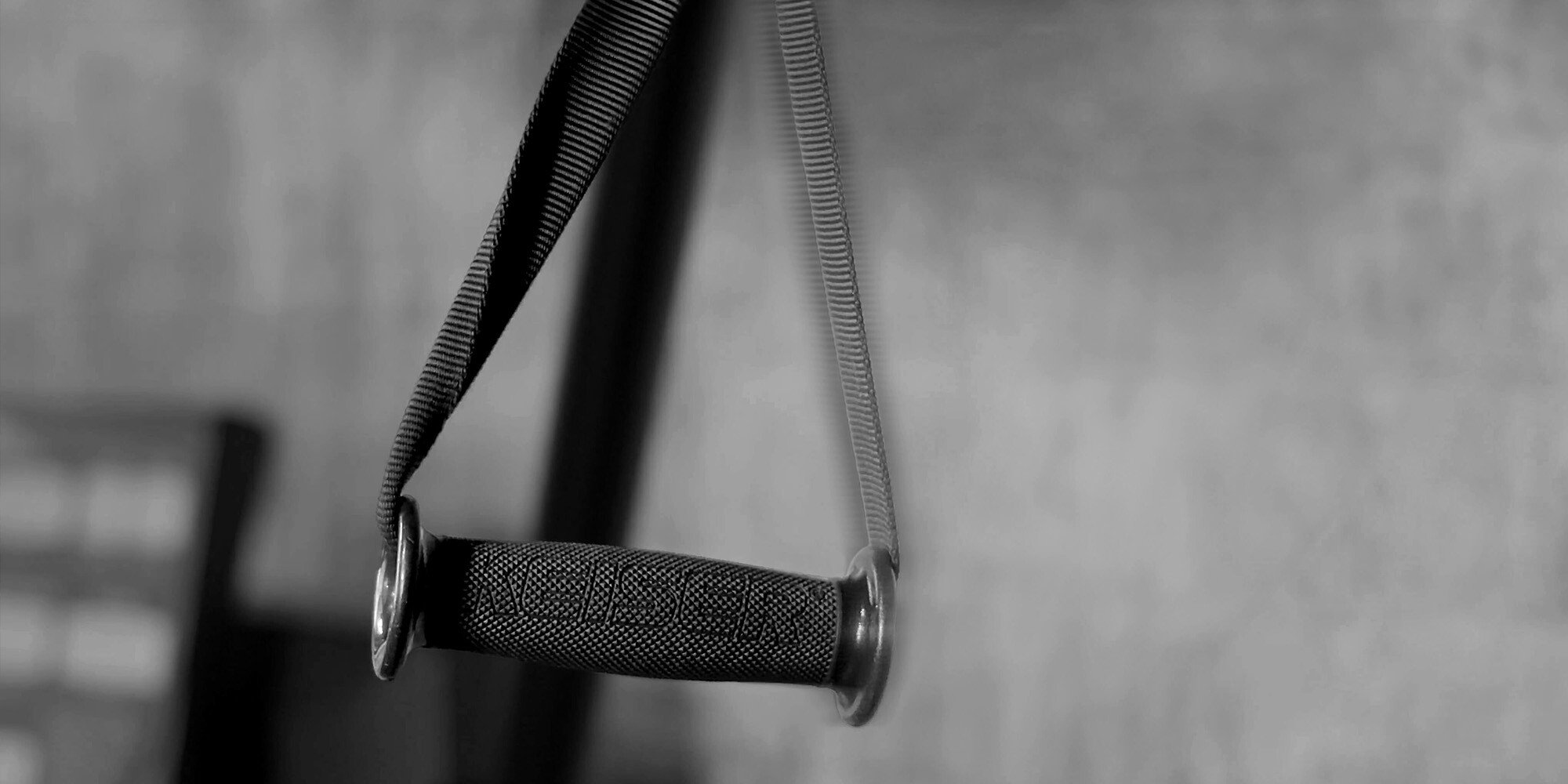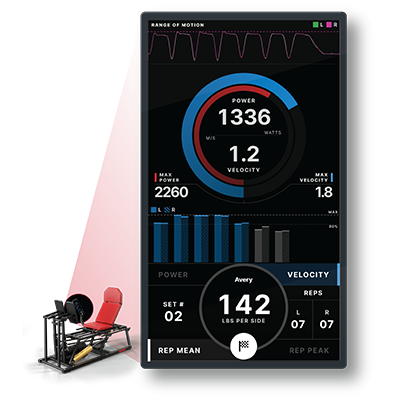6 min read

Rethinking Core Training for Optimal Human Performance
Insights from a conversation with Danny Foley from episode 15 of the Keiser Human Performance Podcast
- Powerful athletic performance
- Resilient movement
- A pain-free body
In this article, we explore insights from Danny Foley (Rude Rock Strength and Conditioning), a high-performance coach and injury management specialist. Coach Foley spent years training Navy SEALs and athletes. His experience working with individuals pushing their physical limits led him to develop a unique approach to core training. This approach prioritizes function over form.
Get ready to rethink everything you thought you knew about core training. We'll explore Coach Foley’s principles for building a resilient foundation for optimal human performance.
Redefining the Core: It’s More Than Just Abs
- Stabilize
- Connect
- Transfer force throughout the body
Key Functions of the Core
- Force transmission: Efficiently transferring force from the lower body to the upper body and vice versa. This is crucial for powerful movements like throwing, kicking, and jumping.
- Injury mitigation: Protecting the spine and surrounding structures from excessive stress, reducing the risk of back pain and other injuries.
- Enhancing movement efficiency: Improving coordination, stability, and control during dynamic activities. This leads to more fluid and powerful movement.
Core Strength: The Foundation for Athletic Performance
- Improved power output: A strong core provides a stable base for generating force during explosive movements, leading to increased speed, agility, and power.
- Enhanced agility and balance: A stable core improves control and coordination, allowing for quick changes in direction and enhanced balance.
- Increased endurance: A strong core supports proper posture and reduces fatigue during prolonged activity, improving endurance and stamina.
- Supports the spine
- Reduces strain on surrounding muscles
- Promotes proper movement mechanics, minimizing the risk of injury
Assessing Core Strength: Going Beyond Traditional Methods
- Manual testing for mobility and stability: Assessing range of motion and stability in the hips, spine, and shoulders to identify restrictions and imbalances.
- Observing movement patterns during gait, sprinting, and plyometrics: Analyzing how the core functions during dynamic movements to identify energy leaks and instability.
- Considering the athlete’s subjective feedback and pain points: Gathering information about the athlete’s experience of movement, including any pain or discomfort they experience.
Signs of Core Weakness
- Poor posture: Excessive slouching or an inability to maintain a neutral spine.
- Lower back pain: Weakness in the core muscles can lead to instability and pain in the lumbar region.
- Difficulty with balance and coordination: A weak core can compromise stability and control during dynamic movements.
- Energy leaks during movement: Visible signs of instability, such as excessive arm movement or torso rotation, during activities like running or throwing.
Debunking the Myth: Deadlifts and Squats Are Not Core Training
Distinguishing Between Compound Lifts and Core Training
- Compound lifts: Primarily focus on strength and power development in the primary movers (legs, back, etc.).
- Core training: Targets the muscles responsible for stability, control, and force transfer, enhancing the effectiveness of compound lifts and overall athleticism.
Coach Foley’s Core Training Principles: Building a Resilient Foundation
Key Principles
- Prioritizing unilateral movements and reducing compressive forces: Emphasizing exercises that challenge one side of the body at a time, reducing stress on the spine and promoting balanced strength. This is particularly important for individuals recovering from injuries.
- Emphasizing locomotive exercises: Incorporating exercises like crawling, rolling, and carrying variations to develop coordination, stability, and spatial awareness.
- Utilizing tools for versatility and multi-planar movement: Integrating tools like ViPRs, landmines, Keiser functional cable machines, and bodyweight exercises to create a diverse training stimulus and challenge the core in multiple planes of motion.
- Progressing from static to dynamic exercises: Starting with static holds and progressing to dynamic movements, gradually increasing the complexity and challenge to the core.
- Prioritizing velocity over resistance for experienced athletes: Shifting the focus from lifting heavy weights to moving quickly and efficiently, enhancing the core’s ability to handle dynamic forces.

Training for Variability and Chaos
- Incorporating reactive exercises: Training the core to respond quickly and efficiently to unexpected forces, mimicking the demands of sport and real-life situations.
- Varying training parameters: Manipulating sets, reps, tempo, and rest periods to create a diverse training stimulus and enhance adaptability.
Practical Applications: Building a Core Training Program
Example Progression for Chop Exercises
- Static High-Low Chop: Begin with a fixed handle and a stable base, focusing on controlled movement through the torso.
- Dynamic High-Low Chop: Introduce a recoil in the starting position and a step with the front leg, adding a dynamic element to the exercise.
- Parallel Chop: Lower the cable to chest level, challenging the core in a different plane of motion.
- Low-High Chop: Reverse the direction of the chop, working against gravity to further challenge the core.
- Single-Arm Chop with Transfer: Use a single cable handle and transfer the handle from one hand to the other, increasing the demand for coordination and stability.
- Curtsy Lunge to Lateral Lunge with Chop: Combine a curtsy lunge with a lateral lunge and a chopping motion, integrating multiple movement patterns into a single exercise.
Sets, Reps, and Tempo Recommendations
- Sets: 2-4 sets per exercise
- Reps: 6-10 reps per set
- Tempo: Vary tempo to create different training stimuli, incorporating slow eccentrics, isometric holds, and reactive movements.
Incorporating Variations
- Surface: Vary the training surface, using a stable platform, turf, or a slant board to challenge the core in different ways.
- Hand position: Experiment with different hand positions on the implement to alter the leverage and muscle activation.
- Implement: Use a variety of implements, such as barbells, dumbbells, kettlebells, and cables, to create a diverse training stimulus.
Sample Core Training Workout
- Warm-up: Four-way crawl, rolling patterns (forward, lateral), marching variations (forward, backward).
- Ground-based exercises: Crab bridging, hamstring bridging, L-sits, adductor bridging.
- Cable exercises: High-low chop progressions, push-pull variations, curtsy lunge to lateral lunge with chop.
- Plyometrics: Medicine ball throws, kettlebell swings, box jumps.
Core work… don't isolate muscles, follow myofascial lines.
— Danny Foley (@danny_ruderock) January 24, 2024
In place of "flex, extend, rotate" think "connect, reciprocate, integrate"
The better we can connect the constituent parts, the more efficient the system becomes. pic.twitter.com/7oJVz6RoqS
Educating Clients: Highlighting the Value of Core Training
Communicating the Benefits of Core Training
- Improved athletic performance: Emphasize how a strong core enhances power, agility, balance, and endurance.
- Reduced risk of injury: Highlight the role of core strength in protecting the spine and supporting proper movement mechanics.
- Enhanced overall well-being: Explain how core training improves posture, reduces back pain, and contributes to a sense of physical strength and stability.
Danny Foley’s Training Philosophy: A Holistic Approach
The Importance of Individualization
- Assessing each athlete’s unique needs and tailoring training programs accordingly.
- Considering factors such as training age, injury history, and sport-specific demands.
- Continuously monitoring progress and making adjustments as needed.
- Find him at Rude Rock Strength and Conditioning
- Follow him on Youtube
- Instagram: @danmode_ruderock
- X (Twitter): @Danny_ruderock

Subscribe to Keiser's FREE publications
Receive tips, articles, and tools to improve human performance via email.